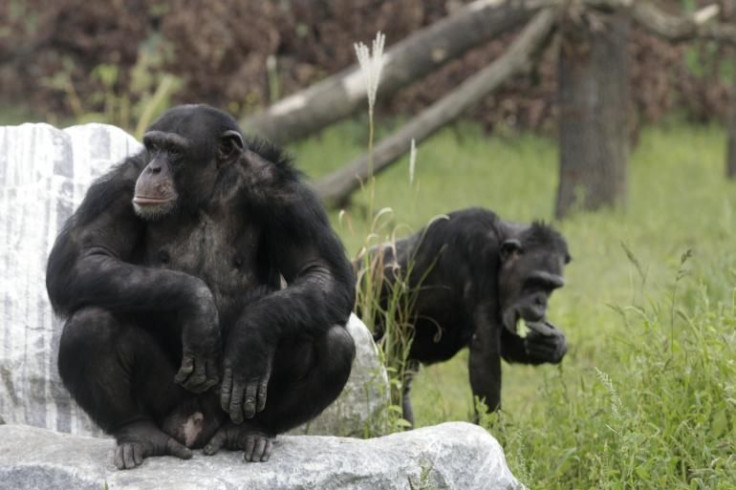The Week In Science: Killer Chimps, Squid Suits, A Monster Black Hole And More

The science world learned this week that Earth will be a much more crowded place than was previously thought in 100 years. There were also reports of record highs over this past summer, with some months posting their warmest average temperatures worldwide since recordkeeping began some 134 years ago. Then there was the story of the robotic “cheetah” running wind sprints through the Massachusetts Institute of Technology. Here are our picks for the best science stories of the week:
Even tiny galaxies can boast impressive, supermassive black holes. A galaxy 1/500th the size of the our galaxy was found to have a black hole five times the mass of the one at the center of the Milky Way. Scientists chalked the discovery up as “an unlikely object in an improbable place,” but said there could be more like it out there.
In the spirit of discoveries involving cephalopods, researchers are developing a synthetic skin for humans that changes color and texture much like an octopus or squid. The camouflage suit probably won’t help you sneak away from your crazy uncle at Thanksgiving dinner, but it could prove useful for military use.
There’s no convicting chimps of murder -- it’s just in their nature. Killing each other “comes naturally” to chimpanzees and isn't, as some have suggested, a byproduct of human interference in their natural environments, a new study has found. Researchers say the aggressive streak in chimps helps scientists better understand human violence -- although we’re positive the “it’s natural” argument won’t hold up in a human court of law.
Scientists see ancient Mayan ruins from a whole new perspective. Researchers with a penchant for lasers used remote-controlled drones to create 3D models of a 1,600-year-old Mayan temple hidden deep in the Mexican jungle. Beats trekking through the underbrush fending off rats, snakes and “kamikaze bugs.”
A colossal squid was dissected live for all the world to see. The squid, found by fishermen near Antarctica, weighed some 770 pounds (350 kilograms) and had eyes the size of dinner plates. Scientists in New Zealand cut the deep-sea monster open at their lab and aired the macabre operation on YouTube. Viewer discretion is definitely advised.
© Copyright IBTimes 2024. All rights reserved.






















